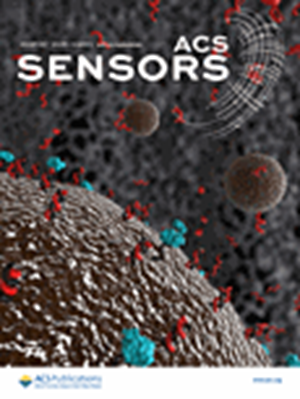Cutting-Edge Exploration of a Molecularly Imprinted Polymer-Coupled Electrochemiluminescence Mechanism Based on Organic Cation Side-Chain Construction for the Identification and Detection of Escherichia coli O157: H7.
IF 8.2
1区 化学
Q1 CHEMISTRY, ANALYTICAL
引用次数: 0
Abstract
In this paper, an organic semiconductor bacterial biosensor was developed for selective detection of facultative anaerobic Escherichia coli O157: H7, which combines electrochemiluminescence (ECL) and bacterial imprinted polymer technologies. Fe2+ and Mn2+ were used to prepare irregular nanocluster ECL emitters (Fe-Mn NCs) via Cu2O, which served as excellent catalysts in the cathodic coreactant (K2S2O8) reaction system, to enhance the ECL signal intensity. Through electropolymerization, the cationic side chains of functional monomers could bind to proteins (such as cytochrome proteins) on the cell membrane of E. coli O157: H7 under aerobic conditions, and transfer to the interior of E. coli O157: H7 and participate in the cyclic regeneration of nicotinamide adenine dinucleotide, which greatly amplifies the detected ECL signal and accelerates the consumption of oxygen by the respiratory chain. When oxygen was consumed, lactic acid was produced by bacteria during the low-oxygen process, in which E. coli O157: H7 can cause a change in the direction of electron flow, resulting in a reduction in the production of SO4•- and a significant decrease in the ECL signal. And when oxygen was readded to the system, the ECL signal recovers or becomes even stronger, where the mechanism of action of cationic semiconductors in this system had been well elucidated. This sensor has a good linear relationship in the range of 101-108 CFU/mL, with a detection limit of 2.29 CFU/mL (S/N = 3), which offers a new detection method for foodborne pathogens, as well as a rapid and accessible identification tool for different types of microorganisms.基于有机阳离子侧链构建的分子印迹聚合物偶联电化学发光机制的前沿探索用于鉴定和检测大肠杆菌O157: H7
本文将电化学发光(ECL)技术与细菌印迹聚合物技术相结合,开发了一种用于兼性厌氧大肠杆菌O157: H7选择性检测的有机半导体细菌生物传感器。以Fe2+和Mn2+为原料,通过Cu2O制备了不规则纳米簇ECL发射体(Fe-Mn NCs),并在阴极共反应体系(K2S2O8)中作为优良的催化剂,增强了ECL信号强度。通过电聚合,功能单体的阳离子侧链可以在有氧条件下与大肠杆菌O157: H7细胞膜上的蛋白质(如细胞色素蛋白)结合,并转移到大肠杆菌O157: H7内部,参与烟酰胺腺嘌呤二核苷酸的循环再生,极大地放大了检测到的ECL信号,加速了呼吸链对氧的消耗。当氧气消耗时,细菌在低氧过程中产生乳酸,大肠杆菌O157: H7可引起电子流方向的改变,导致SO4•-的生成减少,ECL信号显著降低。当系统中加入氧气时,ECL信号恢复或变得更强,从而很好地阐明了阳离子半导体在该系统中的作用机制。该传感器在101 ~ 108 CFU/mL范围内具有良好的线性关系,检出限为2.29 CFU/mL (S/N = 3),为食源性致病菌的检测提供了一种新的方法,也为不同类型微生物提供了一种快速、简便的鉴定工具。
本文章由计算机程序翻译,如有差异,请以英文原文为准。
求助全文
约1分钟内获得全文
求助全文
来源期刊

ACS Sensors
Chemical Engineering-Bioengineering
CiteScore
14.50
自引率
3.40%
发文量
372
期刊介绍:
ACS Sensors is a peer-reviewed research journal that focuses on the dissemination of new and original knowledge in the field of sensor science, particularly those that selectively sense chemical or biological species or processes. The journal covers a broad range of topics, including but not limited to biosensors, chemical sensors, gas sensors, intracellular sensors, single molecule sensors, cell chips, and microfluidic devices. It aims to publish articles that address conceptual advances in sensing technology applicable to various types of analytes or application papers that report on the use of existing sensing concepts in new ways or for new analytes.
 求助内容:
求助内容: 应助结果提醒方式:
应助结果提醒方式:


